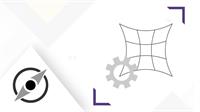
Explore
MIL/MIL-Lite training videos
Videos by topic
MIL/MIL-Lite Fundamentals
Introduction
Image acquisition
Buffers, child buffers, and ROIs
Communication
Display and Graphics
Documentation and utilities
Troubleshooting and optimization
AltiZ
FDK
MIL Processing and Analysis
CoPilot
Image enhancement
Feature extraction
Object location
Measurement
World calibration and fixturing
Character recognition
Barcode reading and verification
Classification
Color
3D
New videos
© 2024 Matrox All Rights Reserved











